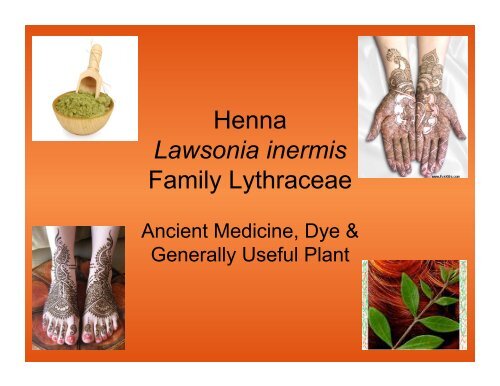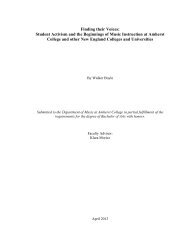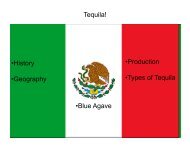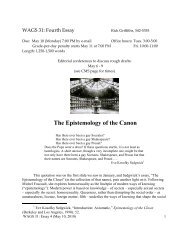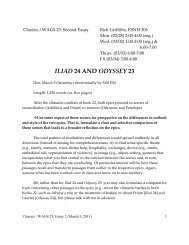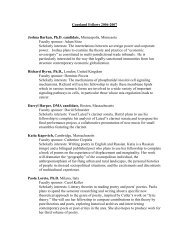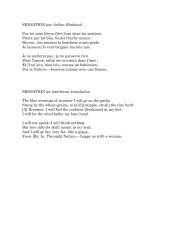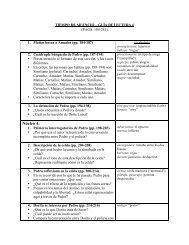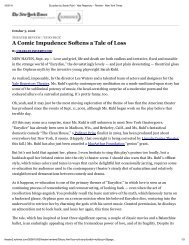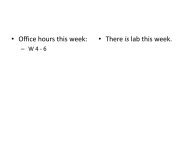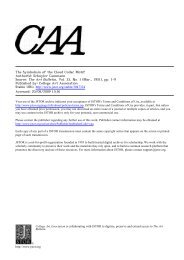Henna Lawsonia inermis Family Lythraceae
Henna Lawsonia inermis Family Lythraceae
Henna Lawsonia inermis Family Lythraceae
Create successful ePaper yourself
Turn your PDF publications into a flip-book with our unique Google optimized e-Paper software.
<strong>Henna</strong><br />
<strong>Lawsonia</strong> <strong>inermis</strong><br />
<strong>Family</strong> <strong>Lythraceae</strong><br />
Ancient Medicine, Dye &<br />
Generally Useful Plant
The Plant<br />
• Shrub native to India and North<br />
Africa<br />
• Tolerant to drought and poor soil<br />
• Simple opposite leaves<br />
• Small white-pinkish flowers<br />
• Gray-brown bark<br />
• Branches that end in spines<br />
• Spherical pea sized fruit<br />
• Pyramid shaped smooth seeds
Compounds in <strong>Henna</strong><br />
• Lawsone<br />
– Main active compound<br />
– Properties similar to tannins<br />
– Responsible for red-orange<br />
dye and many medicinal properties<br />
– High concentration in leaves<br />
• Terpenoids, Alkaloids, Phenols, Glycosides,<br />
Saponins, and Gallic Acid are also present,<br />
but in smaller concentrations
<strong>Henna</strong> as a Dye<br />
• Dye from lawsone in dried leaves<br />
• Temporarily dyes the skin, nails, and<br />
hair; commonly called Mehndi<br />
• Colors textiles<br />
• Used as a tanning agent for leather
<strong>Henna</strong> Fragrance<br />
• Flowers are very fragrant<br />
• Used for perfume and deodorant<br />
• Essential oil is mainly ionones<br />
• White flowers tend to have more<br />
essential oil
<strong>Henna</strong> in Traditional Medicine<br />
• Leaves - powdered, bruised, or brewed<br />
• Dried leaves tend to be more potent<br />
• Used as: anti-inflammatory, antimicrobial,<br />
antifungal, astringent, throat gargle, pain killer<br />
• Useful for: typhoid, hemorrhage, leprosy &<br />
other skin disease, gonorrhea, bruises,<br />
ulcers, burns
<strong>Henna</strong> in Traditional Medicine<br />
• Bark: jaundice, liver enlargement, spleen<br />
enlargement, burns, leprosy and other skin<br />
disease<br />
• Roots: abortifacient<br />
• Flower: leprosy, heart problems<br />
• Seed: anti-diarrheal, fever reducer
<strong>Henna</strong> in Modern Medicine<br />
Proven to be: antimicrobial,<br />
antifungal, anti-inflammatory,<br />
astringent, antioxidant,<br />
hepatoprotective, abortifacient<br />
Not yet approved for<br />
mainstream use<br />
There are still safety issues to<br />
be researched<br />
More research must be<br />
done to isolate the active<br />
compounds for various<br />
ailments and to test all<br />
the traditional uses<br />
Current<br />
research on<br />
it’s ability to<br />
treat skin<br />
problems
Why does henna matter?<br />
• Important in many religions<br />
• Useful cosmetic<br />
• Good natural dye<br />
• Offers a natural medicine to many common<br />
ailments<br />
• ***Potential to safely fight antibiotic<br />
resistant bacteria****


